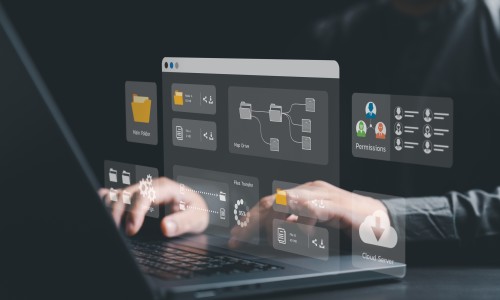
The Different Types Of Backup Data Systems
18 October 2017
With the EU General Data Protection Regulation coming into play in the next 12 months, there is no better time to ensure your business data is safely backed up and sufficiently protected from cyber-attacks such as malware as well as fires, flooding and theft.
Whilst even with enhanced security protection in place, it’s impossible to fully protect a server. Which is why sufficient and secure server backups are critical, we explore the four main types of data backup below;
Four main types of data backup
1. Local backup of server without drive rotation
What is it? A physical device in your office without additional drives.
Pros: Quick recovery of data in the event of single file loss or entire server being encrypted by malware.
Cons: If you suffer a catastrophic event that destroys the server and local backup such as fire or flood, all your data on this device will become compromised.
2. Offsite backup via hardware
What is it? A physical device in your office with removable drives/tapes that can be stored offsite.
Pros: Quick recovery of your data via drives and tapes that have been stored offsite.
Cons: Will take time to manually perform daily backups and staff can often forget to do this which could mean there is no backup over a period of days. You must also ensure that any backup devices taken off site are encrypted in case of theft.
3. Offsite backup to the cloud only
What is it? Cloud backup only – with no onsite backup facility enabled.
Pros: Automatically backup at your scheduled time with no manual intervention, full disaster recovery in case of catastrophic event in the office. We use a variety of backup tools from leading backup suppliers and store the data in Amazon Web Services, which is highly secure. However, there are several options available in regard to cloud backup depending on your needs.
Cons: Can take longer to restore data from the cloud compared to onsite backup especially if you are restoring an entire server. Depending on the solution and amount of data storage required – it can be expensive. You can also only backup providing there is an internet connection so if there is a power outage, data backup may be compromised.
4. Combined local backup and cloud offsite backup
What is it? A physical device in your office and implementation of a cloud backup service.
Pros: Full disaster recovery protection from the cloud backup in the event of a catastrophic incident and quick recovery from local backup in case of accidental deletion or server being encrypted by malware.
Cons: None – this is the backup solution that we recommend to all clients.
Backup Encryption
If you do decide to implement on or off-site backup via hardware, we strongly recommend you ensure that whatever device you are using has 265-bit encryption to prevent the data on it being accessed should it get lost or stolen.
Disaster recovery planning
A robust disaster recovery plan should include a combination of both local backup and cloud backup. We never recommend that a business’s data is solely backed up using a single solution, as should that solution fail, backup will be compromised which could also result in data loss or a potential data breach.
If you would like more information about the different types of data backup and want to find the right one for your business, please get in touch.



